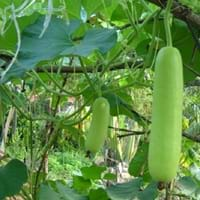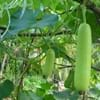Life Span
Annual and Biennials
Perennial
Origin
India, Philippines, Southeast Asia
Southern Europe
Types
Not Available
Bigleaf hydrangea, Hortensia, Smooth hydrangea, Oakleaf hydrangea, Annabelle
Number of Varieties
Not Available
Habitat
Moist Soils, Tropical Climate
Forest edges, Hillside, Woods
USDA Hardiness Zone
5-7
5-9
AHS Heat Zone
12-1
Not Available
Sunset Zone
A1, A2, A3, H1, H2, 1a, 1b, 2a, 2b, 3a, 3b, 4, 5, 6, 7, 8, 9, 10, 11, 12, 13, 14, 15, 16, 17, 18, 19, 20, 21, 22, 23, 24
21,22
Habit
Vining/Climbing
Clump-Forming
Flower Color
Yellow, Orange, Dark Green
Yellow green
Flower Color Modifier
Bicolor
Bicolor
Fruit Color
Yellow, Dark Green
Sandy Brown
Leaf Color in Spring
Green, Dark Green
Green
Leaf Color in Summer
Green, Dark Green
Green
Leaf Color in Fall
Green, Dark Green
Green
Leaf Color in Winter
Not Available
Light Green
Leaf Shape
Palmate
Oblovate
Plant Season
Summer, Fall
Spring, Summer, Fall
Sunlight
Full Sun
Full Sun, Partial Sun
Growth Rate
Very Fast
Fast
Type of Soil
Loam, Sand
Loam, Sand
The pH of Soil
Neutral
Neutral
Soil Drainage
Well drained
Well drained
Bloom Time
Indeterminate
Early Summer, Summer, Late Summer
Tolerances
Drought
Drought
Where to Plant?
Ground
Container, Ground
How to Plant?
Seedlings
Seedlings, Stem Planting
Plant Maintenance
Medium
Medium
Watering Requirements
Requires watering in the growing season, water on alternate days
Not Available
In Summer
Lots of watering
Average Water
In Spring
Moderate
Moderate
In Winter
Average Water
Average Water
Soil Type
Loam, Sand
Loam, Sand
Soil Drainage Capacity
Well drained
Well drained
Sun Exposure
Full Sun
Full Sun, Partial Sun
Pruning
Cut out old flower stalks, Prune after flowering, Remove branches that rub together, Remove dead or diseased plant parts
Remove damaged leaves, Remove dead branches, Remove dead leaves
Fertilizers
High potassium diluted feed of 5-10-5, Nitrogen, Potassium
All-Purpose Liquid Fertilizer
Pests and Diseases
Army-worms, Bacteria wilt, Bacterial leaf spot, Blight, Cucumber beetles, Cutworms, Fusarium leaf spot, Leaf rust, Red spider mite, Striped cucumber beetles
Red blotch
Plant Tolerance
Full Sun, Salt and Soil Compaction, Shallow soil
Drought
Flower Petal Number
Single
Single
Fragrant Bark/Stem
No
Yes
Foliage Texture
Coarse
Medium
Foliage Sheen
Matte
Glossy
Evergreen
No
Semi-Evergreen
Attracts
Bees, Flies, Flying insects
Butterflies
Allergy
Hypoglycaemic Coma, Irregular Heart Rhythm
Chest tightness, Diarrhea, Dizziness, Nausea, Vomiting
Aesthetic Uses
Decorating walls, Ornamental use
Not Available
Beauty Benefits
Anti-ageing, Making cosmetics
Not Available
Edible Uses
Yes
Not Available
Environmental Uses
Food for animals, Insect Repellent
Air purification
Medicinal Uses
Anti-fungal, Blood disorders, Culinary Usage, Diabetes, Gastrointestinal disorders, Laxative, Nutritive, Weight loss
Fever, Kidney problems, Urinary tract problems
Part of Plant Used
Fruits
Flowers, Root
Other Uses
Cosmetics, Culinary use, Repellent, Used in making musical instruments
Not Available
Used As Indoor Plant
No
Not Available
Used As Outdoor Plant
Yes
Yes
Garden Design
Dried Flower/Everlasting, Vine
Edible, Herb / Vegetable
Botanical Name
Lagenaria siceraria
PETROSELINUM crispum var. tuberosum 'Bartowich Long'
Common Name
calabash, bottle gourd, white-flowered gourd, opo squash
Root Parsley
In German
Flaschenkürbis
Hortensie
In French
Lagenaria siceraria
Hortensia
In Spanish
Lagenaria siceraria
Hortensia
In Portuguese
Cabaça
Hortênsia
In Polish
Tykwa pospolita
Hortensja
In Latin
utrem cucurbita
Hibiscus
Phylum
Magnoliophyta
Not Available
Class
Magnoliopsida
Not Available
Order
Cucurbitales
Not Available
Family
Cucurbitaceae
Apiaceae
Genus
Coccinia
Not Available
Clade
Angiosperms, Eudicots, Rosids
Not Available
Tribe
Not Available
Not Available
Subfamily
Papilionoideae
Not Available
Number of Species
Not Available
Season and Care of Bottle Gourd and Root Parsley
Season and care of Bottle Gourd and Root Parsley is important to know. While considering everything about Bottle Gourd and Root Parsley Care, growing season is an essential factor. Bottle Gourd season is Summer and Fall and Root Parsley season is Summer and Fall. The type of soil for Bottle Gourd is Loam, Sand and for Root Parsley is Loam, Sand while the PH of soil for Bottle Gourd is Neutral and for Root Parsley is Neutral.
Bottle Gourd and Root Parsley Physical Information
Bottle Gourd and Root Parsley physical information is very important for comparison. Bottle Gourd height is 60.00 cm and width 90.00 cm whereas Root Parsley height is 30.50 cm and width 30.50 cm. The color specification of Bottle Gourd and Root Parsley are as follows:
Bottle Gourd flower color: Yellow, Orange and Dark Green
Bottle Gourd leaf color: Green, Dark Green
Root Parsley flower color: Yellow green
- Root Parsley leaf color: Green
Care of Bottle Gourd and Root Parsley
Care of Bottle Gourd and Root Parsley include pruning, fertilizers, watering etc. Bottle Gourd pruning is done Cut out old flower stalks, Prune after flowering, Remove branches that rub together and Remove dead or diseased plant parts and Root Parsley pruning is done Remove damaged leaves, Remove dead branches and Remove dead leaves. In summer Bottle Gourd needs Lots of watering and in winter, it needs Average Water. Whereas, in summer Root Parsley needs Average Water and in winter, it needs Average Water.


